
Tell us what you need to find a matching loft conversion specialist

Get free quotes from professionals near you

Compare offers and choose the one that best matches your need
- Householdquotes.co.uk
- Home Insulation
- Wall Insulation
Wall Insulation: Everything You Need to Know
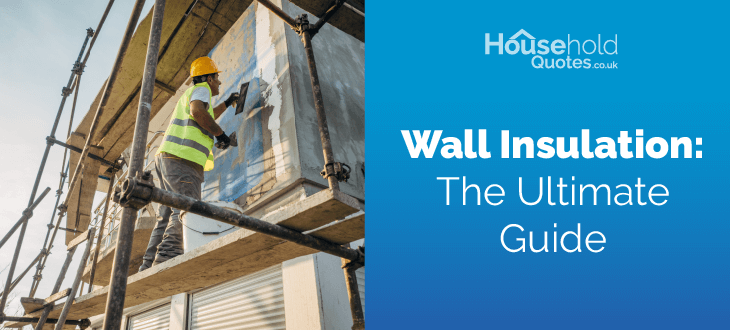
- Poorly insulated homes burn up to 58% more gas every year than those that meet government standards.
- Wall insulation can save a standard detached home in the UK up to £406 on annual energy bills.
- Several grants in the UK offer partial or full coverage of wall insulation for qualifying households.
Wall insulation is perhaps the single most important energy efficiency upgrade any home could use. Poorly insulated walls result in up to one-third of all the heat loss in a house, leading to soaring bills, and a drafty damp home environment that breeds mould and structural damage.
By properly insulating your walls, you give your heating system a much-needed break from constantly trying to regulate your household's inner temperature, leading to significant annual savings, and a much healthier home environment for decades to come.
Even better, the UK government currently backs some grants and schemes that assist low-income and fuel-poor households with partial or full wall insulation coverage.
In this ultimate guide, we will introduce you to everything you need to know about wall insulation; complete with its perks, different styles, costs, and materials.
Ready to enjoy sky-high savings with wall insulation today? Look no further than Household Quotes UK to free you from the stress of endless researching and vetting. Instead of spending countless hours surfing websites and scheduling phone calls with installers, just spend 30 seconds filling out our online form and receive up to 3 free home-tailored quotes. Click below to begin!
- Describe your needs
- Get free quotes
- Choose the best offer
It only takes 30 seconds



Why should walls be insulated?
Slashing energy bills is a top priority for many homeowners. But did you know wall insulation is one of the most impactful upgrades you can make? Beyond putting significant savings back in your pocket, wall insulation will bring you sustained comfort and value for decades to come.
Here are just some of the ways insulated walls can transform your home and life:
- Save up to £406 every year: Instead of throwing money away on heating a drafty house, proper wall insulation can help reduce heat loss, keeping your home warm with much less effort. In a typical UK detached house, that translates to energy bill savings of £406 each year.
- Boost your return on investment: Wall insulation can drastically raise your home's Energy Performance Certificate (EPC) rating. This makes your property more attractive to buyers, fetching a higher rent and selling price on the market.
- Protect your home and health: Cold, damp walls are a breeding ground for mould and rot, leading to structural problems down the line. Insulation combats dampness, safeguarding your investment and creating a healthier living environment by reducing the risk of respiratory illnesses.
- Reduce your carbon footprint by 1.1 tonnes: UK homes generate a staggering amount of CO2, so you'll be doing your part for the planet. Wall insulation makes a huge difference, cutting your carbon footprint by over a tonne annually.
Investing in proper wall insulation is a wise financial decision that delivers immediate savings on energy bills, increases your home's value, protects your health, and benefits the environment.
What are the most common methods of wall insulation?
The best type of wall insulation for your home depends on the type of walls you have. Here's a breakdown of common wall structures in the UK and the most suitable insulation methods for each:
Cavity walls (common in post-1920 homes)
These are walls that have an air gap between an inner and outer brick layer. Insulation is then injected through drilled holes in the outer wall into this cavity using specialist equipment. These holes are then seamlessly sealed with cement for a clean finish.
This minimally disruptive approach to insulating a home is quick and doesn’t change the property's appearance.
Solid walls (common in pre-1920 homes)
Solid walls are single or double brick layer walls that have no cavity space in between. These walls require internal or external insulation approaches:
- Internal insulation is when insulation is installed on the inner wall of the property, either directly onto the wall or as stud wall insulation, then covered up with a plasterboard finish. The only downside is that this approach reduces some internal floor space.
- External insulation is when a layer of insulation is added to the exterior of the property wall from the outside, then covered with plasterwork and cladding. This maintains your home's internal space but can alter the exterior appearance.
Stud walls (interior walls)
These act as internal frames in your house and are used to create new rooms or a gap where insulation can seamlessly be fitted across your walls. Stud walls are filled with insulation during construction or renovation, as it’ll require the existing plasterboard to be removed to access.
Once you've identified the wall type of your home, it’s also good to consider factors like your budget, desired level of disruption, and potential impacts on internal space and home aesthetics. Consulting with a qualified insulation professional can help you make the best decision for your home.
Cavity walls

Wondering what is cavity wall insulation? Many homes in the UK, particularly those built after the 1920s, feature cavity walls. These clever structures consist of two walls – a brick outer wall and a concrete inner wall – separated by hollow space in between called the cavity. This air gap already yields better insulation than solid walls, but is often not enough and requires further insulating.
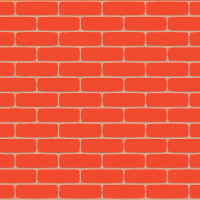
Spotting a cavity wall is quite simple. Take a look at the outer brickwork. If the bricks form a uniform pattern with all bricks laid horizontally (lengthways), you're likely looking at a cavity wall.
New builds often have insulation materials like mineral wool batts pre-installed within the cavity during construction. However, the process is different for existing homes. Here's a breakdown:
- Wall assessment: A professional will first assess your walls to ensure they're suitable for insulation. Problems like dampness or damage need to be addressed beforehand. Additionally, cavities narrower than 50mm can't be insulated, and any existing wiring will require to be relocated.
- Drilling access holes: Once approved, the installer will carefully drill small holes (around 25mm wide) in the outer brick wall, spaced roughly a meter apart. These holes provide access points to the inner cavity space.
- Injecting insulation: Specialized equipment is then used to spray insulation material into the cavity through the drilled holes. Popular choices include mineral wool fibres, polystyrene beads, or spray foam insulation.
- Sealing the deal: After filling the cavity, the installer seals the drilled holes with cement, ensuring minimal visual impact on your property's appearance.
Cavity wall insulation offers a quick and relatively painless process, but it's not without its positive and negative considerations:
- Cost-effective: Compared to solid wall insulation, cavity wall insulation is a budget-friendly option.
- Speedy installation: The process typically takes just 2-3 hours, minimizing disruption.
- Preserved appearance: The insulation is installed within the cavity, leaving your home’s exterior looking exactly as it did before.
- Professional help: This is not a DIY project. You’ll need an accredited professional installer to ensure the job is done correctly.
- Potential issues: A poor installation or inadequate sealing can compromise the insulation’s effectiveness, especially when exposed to moisture. Some materials may also sag over time, reducing their performance.
- Space requirement: A minimum cavity width of 50mm is necessary for insulation. Filling the cavity also eliminates the air gap that could help prevent moisture from reaching the inner wall, which is why proper airtight sealing is important.
Solid and stud walls
Solid walls are a common feature in older properties, particularly those built before the 1920s. These walls are constructed from single or double layers of brick, with no cavity space in between. While less common than other wall types, uninsulated solid walls are notoriously energy inefficient, with less than 3% of such properties meeting insulation requirements.
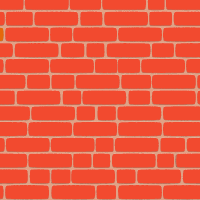
Solid walls can also be identified by their brickwork, normally far less symmetrical with bricks laid in various orientations; lengthways and widthways.
Due to the absence of a cavity space, insulating solid walls requires a different approach compared to cavity walls. The two main methods involve internal or external insulation, which comes with factors to consider:
- More expensive: Solid wall insulation, whether internal or external, is generally more labour-intensive and costly than insulating cavity walls.
- Professional recommended: To ensure proper installation and avoid potential moisture issues, hiring a professional installer is highly advisable for either approach.
External and internal walls
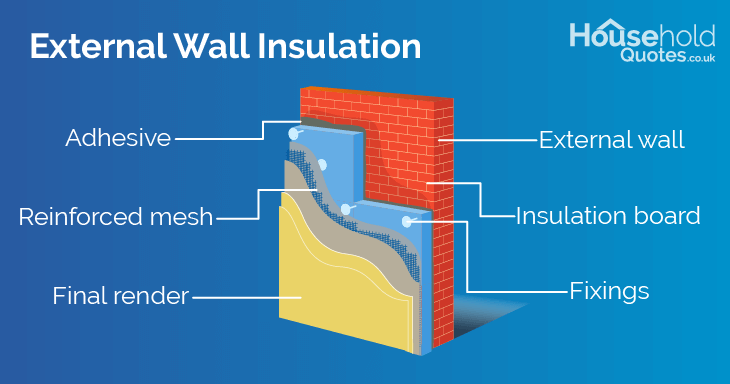
External wall insulation involves applying a layer of insulation material, like rigid boards, onto the outside of your property. This is then covered with a weatherproof finish, such as render or external wall insulation cladding.
Exterior wall insulation is generally considered the most effective solid wall insulation approach as the insulation material is continuous when applied and undisturbed by internal walls and other obstacles. This reduces the risk of cold spots and thermal bridging, both of which can cause mould and rot.
Like all insulation measures, there’s a series of benefits and drawbacks to consider:
- Minimally disruptive: Installation happens outside of the home, leaving your interior untouched and undisturbed.
- Improved protection: External insulation also fills existing cracks in your outer wall and extends the lifespan of your brickwork by covering it up from weathering.
- Reduced moisture: Addressing external air gaps in the brickwork can help prevent condensation and dampness inside your home.
- Higher cost: External insulation is generally much more expensive than internal insulation options.
- Planning permission: Changes to your property’s exterior might require approval from a local regulatory body.
- Cold bridge risk: Improper sealing around windows, doors and other frames can create weak insulation points, weakening your insulation’s heat retention capabilities.

Internal wall insulation involves attaching insulation sheets to the interior walls and covering them with plasterboard. Alternatively, you can build stud walls filled with insulation rolls like mineral wool or sheep wool.
- Cost-effective: Internal insulation is typically cheaper than external methods.
- Enhanced soundproofing: The insulation adds a layer of soundproofing to your home.
- Preserved exterior: This approach doesn’t alter the building’s facade.
- Disruptive installation: The process can be messy and disrupt your living space.
- Reduced floor space: Internal insulation slightly reduces the usable area of your rooms.
- Additional work: Door frames, skirting boards, and fittings need removal and reinstallation.
Whether deciding on taking up an inside or outside wall insulation project, there are some factors and personal preferences you could think about to help guide your decision:
- Budget: External insulation offers better benefits in some senses, but comes at a higher cost than internal insulation.
- Disruption: Internal insulation is a disruptive process, while external work leaves your home interior untouched.
- Planning permission: External changes to your home's facade might require approval, whereas internal work usually doesn't.
By understanding the pros and cons of each approach and the factors that can influence your decision, you can make an informed choice to improve your home's comfort and energy efficiency in the way that suits you best.
Costs and government grants to insulate your walls
Like all big investments, costs matter. While a wall insulation cost might seem steep, this investment comes with a host of financial and domestic benefits that will positively shape your home life for decades to come. Better yet, the UK also has several grants and schemes in place to help qualifying households with discounted or free wall insulation.
For example, you can get free cavity wall insulation grants via the two main grant schemes in the UK: The Great British Insulation Scheme (GBIS) or the Energy Company Obligation (ECO4).
The price of insulating your walls will vary depending on a range of factors. As mentioned, a big influence will be the type of walls you have; solid or cavity, but also your home size, budget, repairs and personal preferences can all play a role in shaping the final bill.
To start, let's have a look at the average cavity wall insulation cost and savings in a range of UK property types:
| Home type | Cavity wall insulation cost | Yearly energy bill savings |
|---|---|---|
| Apartment / Flat | £1000 | £110 |
| Semi-detached house | £2700 | £235 |
| Detached house | £4600 | £406 |
| Mid terrace house | £1500 | £140 |
| Detached bungalow | £2100 | £175 |
For solid wall insulation, a common semi-detached house in the UK can pay somewhere around £7,500 for internal wall insulation, and up to £12,000 for external wall insulation based on market estimates.
Keep in mind that estimating an internal and external wall insulation cost is more difficult, given factors such as the insulation approach (internal and external), range of materials, and varying home sizes.
To help make these costs manageable, we suggest conducting an insulation project at the same time as other home improvements and repairs. That way, installers won’t have to spend as much time and labour on preparing the home.
How much does it cost to insulate a wall?
Now that we’ve explored the general price range for wall insulation per home type, let's delve deeper into other cost variables that influence your final investment.
The type of insulation material you opt for significantly impacts the overall cost of an insulation job. Generally speaking, pricier materials offer better heat retention, but luckily, there is a range of affordable yet effective materials suitable for every budget.
Here’s is our summary of expected wall insulation material prices per m2:
| Insulating material | Best for | Average price (per m2) |
|---|---|---|
| PIR Board | Internal / External | £5 – £15 |
| Fibreglass | Internal | £10 |
| Polystyrene (EPS) Board | Internal / External | £10 |
| Cellulose | Internal | £10 - £12 |
| Mineral Wool (Glass) | Internal | £13 - £17.5 |
| Cork board | Internal / External | £17 - £22 |
| Sheep’s wool | Internal | £17.5 - £22 |
| Mineral Wool (Rock) | Internal | £18.2 |
| Polyurethane Board | Internal / External | £21.5 |
Material availability can affect these cost estimates. With house insulation gaining popularity in the UK, popular or production-intensive materials might experience price hikes. Here are some additional factors to keep in mind:
- Labour costs: Installation can vary in price depending on your location and the complexity of the project. For example, insulating your walls in an urban metropolitan location, or densely packed neighbourhood may cost more than in a rural area.
- Project size: The total square footage of the walls you plan to insulate will directly impact the overall cost.
By considering these variables, you can create a more accurate budget for your wall insulation project.
What are the available grants for wall insulation?
The UK government offers two grant schemes to help make wall insulation more affordable: the Great British Insulation Scheme (GBIS) and the Energy Company Obligation (ECO4). Both initiatives are designed to assist low-income and fuel-poor households across the country and are active until March 2026.
- Focus: Provides one-off insulation measures per qualifying household. This includes both solid and cavity wall insulation grants. This approach allows GBIS to cover a broader range of homes in the UK.
- Application: The scheme can be applied directly through the UK government website.
- Eligibility: You must be within a council tax band between or lower than A and E, or your home must have an Energy Performance Certificate (EPC) rating below D. Low-income categories and recipients of government benefits may also qualify.
- Focus: Rather than the government directly, energy companies are obligated to help qualifying households with various home upgrades, including internal and external wall insulation grants.
- Application: Directly contact your energy provider to see if you qualify for the scheme, and discuss the application process and requirements.
- Eligibility: Eligibility to the scheme is largely dependent on your home’s EPC rating being below D. Similar to GBIS, low-income households and those receiving government benefits and allowances may also qualify for assistance.
Whether you qualify for GBIS or ECO4, wall insulation government grants offer significant financial assistance if you’re considering upgrading your home’s efficiency but cannot afford to. Reach out directly to your energy provider or visit the UK government portal to learn more about each scheme.
Insulating walls: Regulations and requirements
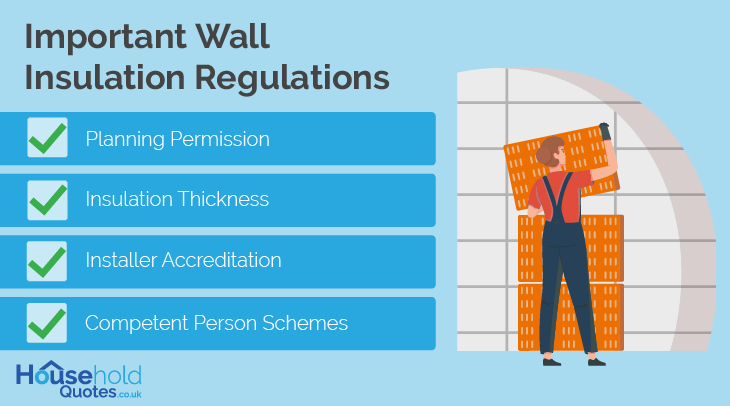
There are several regulations and requirements in place in the UK to ensure wall insulation projects are effective. It’s important to understand these guidelines as they help ensure that your household receives a properly installed and effective upgrade.
Here's a breakdown of the key points to look out for:
Permissions:
- External wall insulation: As this form of insulation alters your property's appearance and may momentarily disturb neighbours, planning permission is often required.
- Cavity wall insulation: While this is a relatively quick process, a building notice needs to be submitted to your local authority. Reputable installers typically handle this process for you.
Insulation thickness:
- Cavity walls: The UK government recommends at least 150mm cavity wall insulation. Homes with 100mm cavity wall insulation may require a top-up.
- Internal walls (stud walls): Aim for at least 120mm of standard insulation.
- External walls: Rigid sheet insulation should be between 50mm and 100mm thick.
Choosing an installer:
- PAS 2030-2035 accreditation: This installer standard is required if you’re receiving wall insulation through a grant, but in any case, is a good demonstration of installer professionalism. Prioritise installers with this government-backed certification.
- Competent Person Scheme membership: Reputable installers belong to schemes like CIGA or Stroma, verifying their qualifications and competence in their field of expertise. Working with such installers better guarantees a professional job worth your money.
Best wall insulation materials
The best wall insulation materials all have one thing in common; they’re suited to your needs. As such, no shoe fits all, but rather the perfect material will hinge on your wall type (cavity or solid), ideal budget and personal preferences.
Either way, some insulation materials are better suited for certain jobs than others. In this section, we’ll introduce you to three of the most popular wall insulation approaches you’re likely to come across, their strengths, weaknesses, and what wall insulation job they are best suited for.
Insulation rolls

An affordable and eco-friendly choice that is typically made from natural materials like sheep wool or sustainable options like mineral wool and fibreglass. A wall insulation roll is a soft fibrous material that can be cut into insulation sheets and fitted in between stud walls during internal insulation.
- One of the most budget-friendly options that is readily available at most hardware stores.
- DIY installation is doable for the average homeowner with some skills and research.
- An environmentally conscious choice with options from natural or recycled materials.
- Not suitable for external walls due to weather and moisture vulnerability.
- Requires thicker insulation (up to 100mm) compared to other options, which can slightly reduce your internal floor space.
- Insulation effectiveness can decrease if exposed to moisture or compressed over time.
Insulation boards

These are rigid insulation panels of insulating material that are well known for their superior heat retention capabilities. They’re well suited to be used during internal or external wall insulation but aren’t ideal for cavity walls.
A wall insulation board is normally made from synthetic foams such as polyurethane, polyiso, or (EPS / XPS) polystyrene, but sustainable alternatives to insulation foam boards exist, such as cork boards.
- Excellent heat insulation for internal and external walls.
- Synthetic boards boast higher moisture resistance compared to other materials.
- Requires less thickness compared to rolls, saving floor space.
- Generally more expensive than most other insulation materials.
- As this insulation is non-expanding, sealing for air gaps and moisture leaks is required.
- High risk of releasing harmful fumes and carcinogens if exposed to high heat or fire.
Foam insulation

Foam insulation comes in the form of a liquid spray and expands to fill a space, providing one of the most excellent heat insulation capacities on the market. It’s usually used during cavity wall foam insulation by being sprayed into the space through a series of drilled holes.
Despite its high heat retention capability, spray foam insulation comes with plenty of pros and cons to consider.
- Top-tier heat retention capabilities.
- Quick and easy installation process.
- Durable with a long lifespan.
- One of the most expensive insulation materials per square metre.
- Very difficult to remove and dispose of old and outdated spray foam, potentially affecting your home’s resale value.
- Spray foam can release harmful off-gases and VOCs during and after installation.
Should you insulate walls by yourself?
Insulating your walls is the best step to significantly improve your home's comfort and energy efficiency, but should you tackle it yourself or hire a professional? Let's weigh the options.
While DIY insulation can be significantly cheaper upfront, the long-term value a professional installation brings outweighs the short-term savings on many fronts.
For insulation jobs like cavity walls, a professional installer is required due to the use of specialized equipment and expertise, making it unsuitable for DIY. For other wall types, here's why hiring a professional might be smarter:
- Safety: Insulation materials like fibreglass can be irritating to the skin and eyes. Some others can release toxic fumes and VOCs during installation. Professionals are trained and equipped to handle these issues safely, protecting your health and the environment.
- Efficiency: Professionals can complete the job much faster than a DIY approach, minimising the disruption to your daily life, and freeing you from a burdensome task.
- Expertise: Qualified installers have the necessary skills to identify and address underlying problems that could impact insulation performance, like drafts, moisture, or structural issues. They'll also ensure your insulation meets all set regulations.
Finding a reputable and reliable installer can feel overwhelming. We understand the struggle of wading through countless websites and phone calls in an attempt to land the perfect bargain. That's why GreenMatch UK is here to connect you with qualified local professionals!
By filling out our quick 30-second online form, we can provide you with up to 3 free quotes from our trusted network of accredited installers in your area. No hidden charges and no obligations apply, simply sit back and have the quotes come to you. Click below to begin!
- Describe your needs
- Get free quotes
- Choose the best offer
It only takes 30 seconds



FAQ
The cost to insulate walls largely depends on your wall type and property size. A standard 3-bedroom semi-detached home in the UK can expect to pay around £2700 for full cavity wall insulation, while this can go up to £4600 for a detached home.
The type of insulation you need is based on your wall type, budget and personal preferences. Cavity walls normally use blown-in mineral fibres, polystyrene beads, or spray foam insulation. External walls are more likely to use a thermal insulation board, while stud wall insulation can use a wider range of materials. Consult a professional installer to discuss the best choice based on your property.
Cavity wall insulation works by having a professional drill a series of small holes into the external wall to access the cavity space. Then, a special applicator gun is used to inject insulating material into the cavity before sealing up the holes with concrete for a clean finish.
To insulate a wall, it’s crucial to first identify whether they’re solid or cavity walls. This will determine the best approach and materials for the job. Additionally, be sure to check all government regulations and obtain any required permits. For a professional and guaranteed installation, consider hiring an accredited installer.
